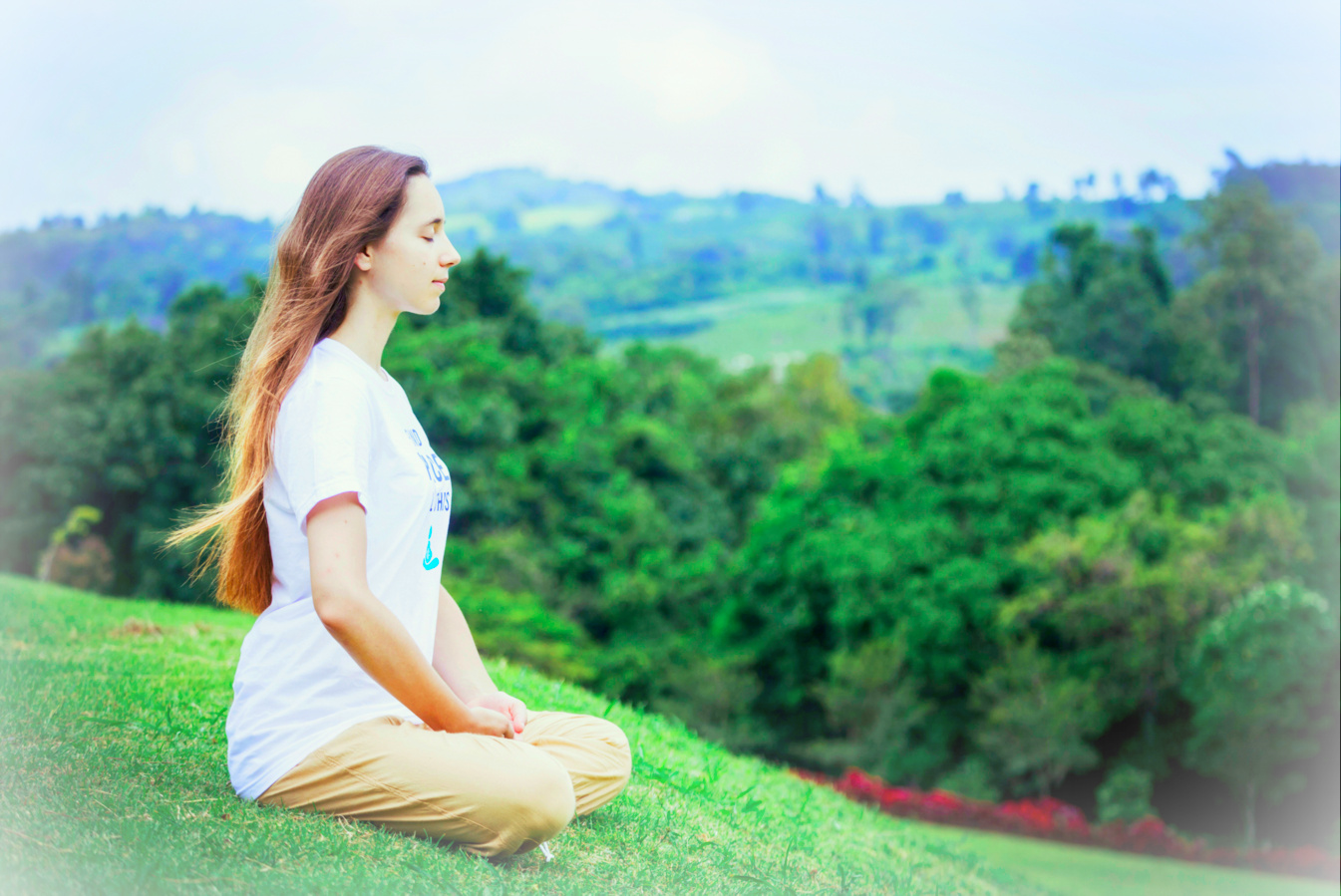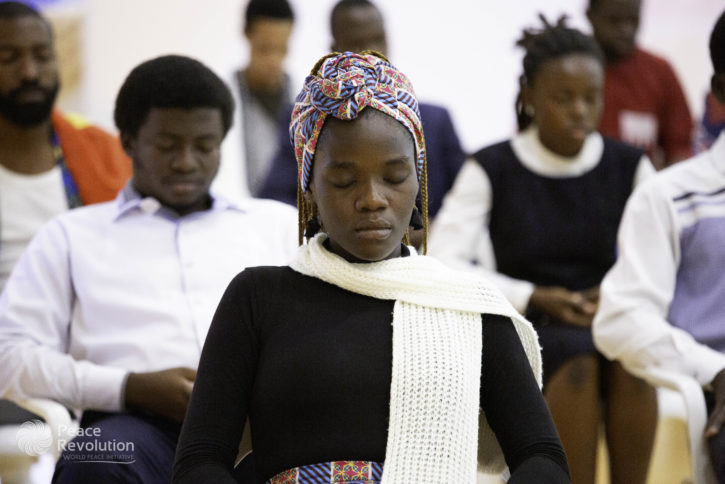The most common and basic meditation technique since Buddha’s time has been the conscious observation of the breathing, also known as anapanasati or mindfulness of breathing. Why is this practice so important for meditation? In this article, I am going to show the powerful characteristics of breathing as a meditation object.
Directing our attention
When we start our meditation session, we need an object in order to cultivate stillness and gradually settle our mind down. One of the pillars of meditation practice is the directness of our attention, which comes along with relaxation. By directing our attention to a concrete point of reference we become more mentally focused. Even if we are trying to focus our attention to one point, when we meditate, we keep an attitude of waiting until our mind is ready to find its way to the centre space on its own, a way to merge back into the original emptiness.
The meditation object is, therefore, a means to keep our attention focused on one point. Our mind then becomes stronger, and it will be easier to overcome distractions. The complexity of the mental phenomena wandering in the surface of our awareness returns gradually into the simple source of purity and clarity they come from.
The goal of anapanasati or the role of breathing as an object of meditation, therefore, is to help the mind calm down and become more stable, because our attention is focused on one thing.
Breathing as a meditation object
There are several reasons why the breath is used as the first meditation object in every practice. For me, these reasons are directly related with the features of the breath:
- Breathing is a constant process. You don’t have to look for it; you don’t need to generate it by making an effort. Breathing is already there. If you close your eyes, you will soon realize that you are breathing without having to think of it. The breathing, like the sea waves, is constantly coming and flowing in and out, is moving without pause. But unlike the sea, the breath is within you, and therefore, always available to your consciousness at any time and any moment.
- Breathing is an automatic process. Even if you are not aware of your breath, you are breathing. Breathing does not depend on the decision of your mind to be breathing. That saves the mind the energy to evoke a meditation object. The beauty of this fact is that when we observe the breathing we don’t need to do anything rather than turning our attention towards the breath. And then something magic happens. A new awareness arises. Our mental distractions move away. Our mind starts to move inwardly in a journey into its depths.
- When we observe the breath, we perform the paradox of observing an internal process as if it were an external object. Holding this duality when observing the breath helps the mind overcome the distinction between our inside and outside. Also our mind can more easily move inwards. The new awareness that arises contains the experience of unity between the external and the internal.
- Breathing is a bodily process. At the beginning of the meditation, when our mind is still caught in the sensorial process of physical stimuli, it is easier for the mind to observe something that appears in the body, that contains a physical quality, rather than choose a purely mental object to focus on.
A bridge to the present moment
Breathing, as it is perceived as a bodily feeling, is an experience. And any experience, sensation or feeling can only occur in the present moment. Therefore, observing the breath connects us immediately with the present, with something that is happening here and now. When we keep our attention focused on our breath, our attention sticks to the present moment without having to do any effort.
Breathing is also a way to find our own centre. It does this in two ways. Firstly, if we follow the movements of the in-breath until the end, we realize that the last point that our breath reaches is the deepest and central part of our abdomen, where the centre of the body, our centre of gravity, is located. Secondly, as we become more aware of the breath, our inner space expands. We get a clearer and broader perspective of our interior. The awareness of our inside becomes more solid and more present to the mind, so it also doesn’t get so easily distracted by the external or superficial phenomena. The mindfulness of breath is therefore a way to be more in touch with our centre.
The point of no breath
We can observe that there are three stages when we breathe:
- Inhalation
- A pause between inhalation and exhalation.
- Exhalation
In the connecting space between the in-breath and the out-breath, there is no movement, no physical sensation of breathing, no awareness of any object. While the awareness of breathing is present in the inhalation and the exhalation, it doesn’t exist when the breathing “stops” between these two processes.
This point is actually very important. A translation of the pali word anapanasati is “awareness of the point where there is no breath”. Maybe that means that the observation of the breath is leading to the observation of the no-breath, the empty space that holds the process of breathing, the mystery where consciousness arises. When observing the no-breath, we might be looking at the very origin of our awareness.
Going deeper
There are two moments in our meditation when the right thing to do would be to forget about our process of breathing. The first situation is when our mind has already achieved a solid state of stillness, we call this mental state Samadhi. The goal of the awareness of the breath is getting into Samadhi. Once we are there, then we can let go this technique as it has already fulfilled its purpose.
But there are two things to be aware of. One is that it doesn’t have to be a conscious decision. When we are in Samadhi, our mind and organism will intuitively know what is the best to do to and it will naturally do it by itself. The second one is that whenever our mind gets distracted again, it will be perhaps a good idea to start using again the mindfulness of breathing in order to get back to the state of stillness.
The second situation where we should let go this technique during the meditation practice is when the point where there is no breath naturally comes up to the foreground and our attention is mainly placed there. When this happens, it is probably because our awareness has slowly slipped away from the process of breathing and merged with the emptiness that holds the process of breathing until it becomes completely still. This is a sign that the mind is moving from the physical to the refined, and that allows to go deeper and deeper into the nature of the mind and states of awareness.
Simple exercises to increase breathing awareness
In order to get more benefits by using the observation of breathing as a meditation technique, here are some exercises you can use in your practice:
- Track the breath from the beginning to the end, capturing at every moment the sensation in the bodily parts involved in this process, from the nose to the diaphragm.
- Focus your attention on the abdomen and its movement. In this area, try to locate the centre of gravity of your body.
- Visualize a point in the middle of your forehead and try to imagine that the air enters through this area and continues its journey through the rest of the respiratory system. Exhale through the nose or the mouth.
- When you breathe in, visualize that air can reach all the parts of your body as if expanding from the centre of your body to the tips of the fingers and toes. Then exhale and feel like an empty space capable of being filled again.
- Visualize the inhalation as if it started through the soles of your feet, going all the way to the head, and when exhaling, imagine the air getting out through your hands.
- When inhaling, count “1,2,3,4,5” and when exhaling “6,7,8,9,10”. Repeat this process several times.
If you would like to improve your awareness of breathing and discover other meditation techniques, your can start our free self-development program here!






